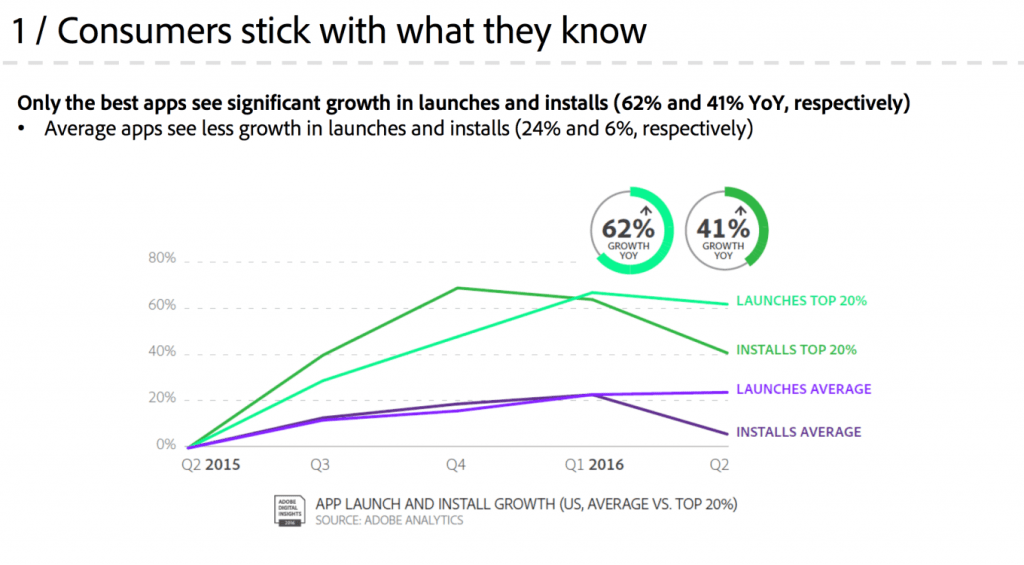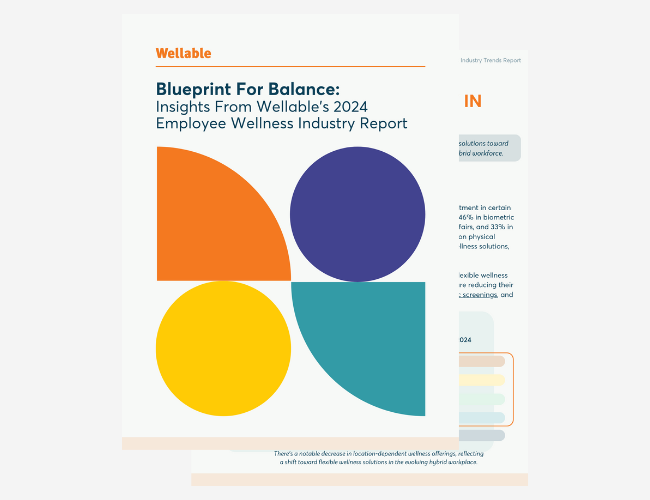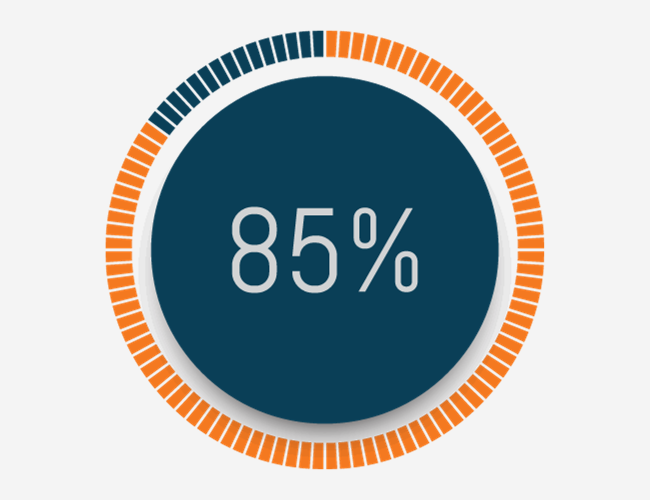Loyal readers of the Wellable Blog know how important it is for corporate wellness administrators to embrace the consumerism of their industry. Wellable has dubbed this embrace a consumer wellness strategy and encourages everyone involved with employee wellness to consider it. In short, a consumer wellness strategy suggests that employee wellness should be built around increasingly popular consumer wellness technologies (wearable devices and mobile apps) rather than rigid proprietary technologies and practices that dominate the market today. More data from Adobe on the state of the mobile app market affirms the merits of a consumer wellness strategy.

According to the report, it’s getting harder to get people to try new mobile applications as consumers are sticking to what they know when it comes to the apps on their smartphones. App installs are only up 6% year-over-year. This is in contrast to launches of existing apps, which were up 24% year-over-year.
The report also found that app abandonment is also on the rise with five out of every 10 apps being used fewer than 10 times and two out of every 10 apps being used only once. Specifically, 55% of health apps were used less than 10 times and 19% were used only once. The number one reason for why people delete their apps is because they were perceived to be “not useful”. The analysis is based on more than 290 billion visits from 16,000+ mobile sites and 85+ billion app launches.

These stats seem fairly dismal, but one hidden gem is that the best apps, as defined as those in the top 20%, saw significant growth in launches (62%) and installs (41%). This means that existing apps that consumers are familiar with are the ones they will most likely continue to use. These apps also are the ones in the best position to see a growth in new users. From the perspective of a wellness coordinator thinking about launching a technology platform at their organization, it is important to consider the merits (or lack thereof) of launching a proprietary app from a wellness vendor. Even without the findings from this research, proprietary apps have always had an uphill battle. They lack critical features most important to users because they focus on the employer rather employee, do not provide choice or options that exist in the consumer market, and do not implement leading product management philosophies. As a result, the usage of these apps is very low relative to the membership base touted by vendors and have incredibly low reviews in the app store. Combined with the extra challenges in the market highlighted by the Adobe research, it becomes clear that wellness coordinators should focus on embracing consumer wellness technologies rather than enterprise wellness technologies in their organizations. The sole focus of enterprise wellness technologies should be to empower and embrace consumer ones, not interfere or distract from them.












